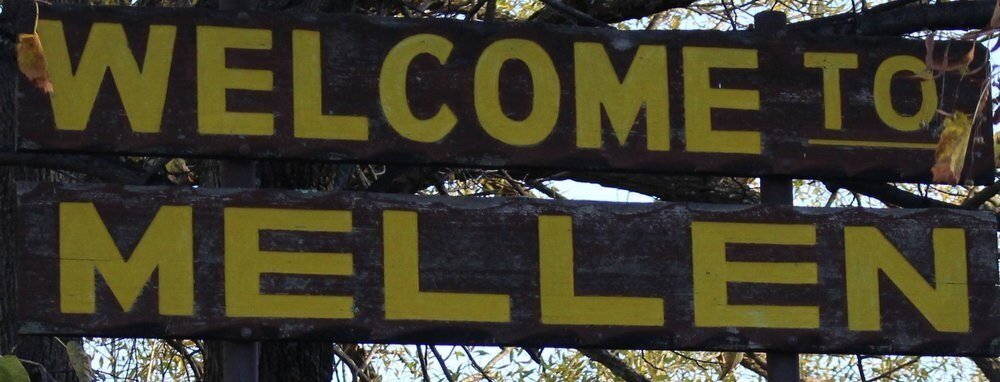Cryptid Profile: The Thunder Horse
When it comes to cryptozoology, everyone has their own personal opinion on what is considered a cryptid and what is not. Some believe the creature in question has to be monstrous in size, terrifying in appearance, and have had numerous sightings and encounters before it can be considered a true cryptid. Others feel that real cryptids are elusive animals that skirt the border between the real and the supernatural, the creatures that never seem to age and are responsible for the same kinds of sightings for well over 100yrs (we’re looking at you Nessie). But then there are the realists, the ones who feel that a cryptid is simply a creature that hasn’t been fully categorized by science and has found itself in the middle of a mystery trying to figure out what it is.
The realists look at all aspects to try and solve the mystery. How does the creature in question link up with other known animals in its area? Could it possibly be an already known creature with a simple genetic mutation that causes it to look different than what people are used to? Are there any historical legends or folklore that may help pinpoint when this creature started showing up? Can the testing of its bones help reveal the DNA of other creatures within its genus?
Wait, hold on a second, that last one doesn’t sound right. We are told that in order for a creature to be a cryptid, it has to be unknown, and it can’t be a cryptid if its skeleton has been discovered and categorized. Can it?
The answer is yes it can. And the creature below is a shining example of how that works.
In the early days of North America -long before the creation of countries and state borders- the Native American tribes collectively known as the Sioux (also as Lakota) made their homes from the present day border of the U.S. and Canada, all the way down to Nebraska and Iowa. Within this wide range was the Sioux tribe known as the Santee Dakota, a tribe that primarily resided within the eastern area of modern day North and South Dakota, Minnesota, and Northern Iowa. It is from this tribe that the legend of the cryptid known as the Thunder Horse stems.
As with all Native American tribes and First Nations peoples, the Santee Dakota had legends that explained how things in the world around them were created and how they worked. One of these legends -which originated from before the 1600’s- talked about how thunderstorms were created by the ancient thunder beast known as the Thunder Horse. The Santee Dakota legend told of how the Thunder Horse was a creature from “away back in time” but had disappeared from the open plains around their camps before their arrival. But instead of simply disappearing and never coming back, the Thunder Horse moved up into the heavens where it would occasionally reappear on earth to hunt the bison that occupied the dry plains.
When the Thunder Horse decided it was time to hunt the bison, it would leap down from the heavens and would create thunder when its hoofs hit the earth. The mighty beast would then chase the bison across the open plains in hopes of striking and killing them with its large hoofs. As the Thunder Horse gave chase, the bison would run with such speed that their hoofs would create sparks over the rocks in the dry ground. These sparks would result in the lighting that accompanied the growing storm. As the chase progressed, large amounts of rain would follow behind, thus creating the full thunderstorm. Once the storm was in full force, the Thunder Horse would fall and its bones would turn to stone and lay flat upon the earth. These bones would then be found by hunting parties and brought back to camp where the legend of the Thunder Horse would be retold.
Now you may be wondering, how does the Thunder Horse qualify as a cryptid since it is obviously a story made up to explain where storms come from? Well, that’s where it gets interesting, you see, after large and powerful storms, tribe members were actually finding large stone like bones upon the earth. Bones that they did not recognize as belonging to any known creature that they readily encountered. So an unknown creature was leaving bones behind that could not be explained. That perfectly sums up what a cryptid is. But the story doesn’t end there, because when American paleontologist Othniel Marsh heard about the legend of the Thunder Horse and the accompanying tales of large unknown bones in the Dakota area in 1875, he needed to find out if there was any truth to the story.
When Marsh arrived in the Badlands area of South Dakota and began asking about the legend of the Thunder Horse, he was presented with an incredibly large jawbone from a tribe member by the name of Young Man Afraid Of His Horses. The given jawbone was not recognized as anything from any known animal in the area and had within it molars nearly 3 inches wide. The young Sioux told Marsh that this was the true jaw of a Thunder Horse and that more could be found within the area after a heavy rain. He was told that the rains were needed to soak the ground and cause the loose earth to slide off the hills and surrounding canyons to expose the bones below. And with this information, Marsh set out with a team to discover the Thunder Horse for himself.
After a few days -and a few storms- Marsh and his team were successful in locating the bones, the Thunder Horse had been found. Not long after determining the area was a good location for further research, the team got to work digging up as many bones as they could. And after weeks of digging in the Badlands of South Dakota, the team had uncovered a complete skeleton. The creature they had unearthed (when fully assembled at a later time) stood nearly 8ft tall at the shoulders, was nearly 16ft in length, had a Y shaped horn upon its head, four toes on each foot, and looked almost like a rhinoceros.
As it turns out, the creature that they had dug up was known as Megacerops, a rhinoceros-like creature that was related to horses and went extinct between 33-38 million years ago. Although the Megacerops had already been discovered and named by Joseph Leidy in 1870, it still lacked a proper family order. Because of this, Marsh created the family order Brontotheriidae, which when translated from Greek means “Thunder Beast.” Marsh chose this name as a way to pay homage to the Sioux legend of the Thunder Horse.
So how exactly does the Thunder Horse qualify as a cryptid? The reason is that the creature was at one point known only through legends and stories, but was very much real to those who had experienced it in some way, much like many other cryptids. The Thunder Horse could have long remained nothing but a legend if it wasn’t for the work of one man who made it his goal to find out if the story was based in fact, or truly just a legend. This very practice is exactly what Cryptozoologists do, they try to solve a mystery surrounding an unknown creature.
The other reason that the Thunder Horse is considered a cryptid is that it falls within one of the categories on George M. Eberhart’s Cryptozoological Classification Guidelines. These guidelines, which can be found within Volumes 1-2 of ’Mysterious Creatures: A Guide To Cryptozoology’, were created to better help classify the unknown creatures that fall on the outside of mainstream science. The category that the Thunder Horse fits within is number 5 of 10 and states that any creature in this category is considered a “Lingerling”. The classification is given to the survival of creatures known from the fossil record that are believed to have survived into modern times much longer than previously thought.
Remember, it was truly believed by the Sioux that this creature from “away back in time” was still being “seen” and was (in a way) alive during their lifetime and hunting down the local fauna of the area. The discovery of the bones only solidified their belief that this creature was real. Because of this strong belief and the evidence found of its possible -and somewhat verified- existence, it was able to meet the requirements for official cryptid classification. And it was because of that classification that the Thunder Horse became one of the only cryptids to both truly exist and not exist at the same time.
-The Pine Barrens Institute
*Image Credit: https://en.m.wikipedia.org/wiki/Megacerops
Do you have a strange tale, family legend, or odd sighting you would like to report? Get in touch with us here to share what you know!
Want more strange stories in your life? If the answer is yes, then make sure to check out our books ‘Monsters In Print: A Collection Of Curious Creatures Known Mostly From Newspapers’ and ‘Ghosts In Print: An Assemblage of Spirits, Spooks, and Specters From Newspapers of Old’, both available from Amazon!
Make sure to also check out our shop for official PBI shirts, totes, buttons, and stickers!































